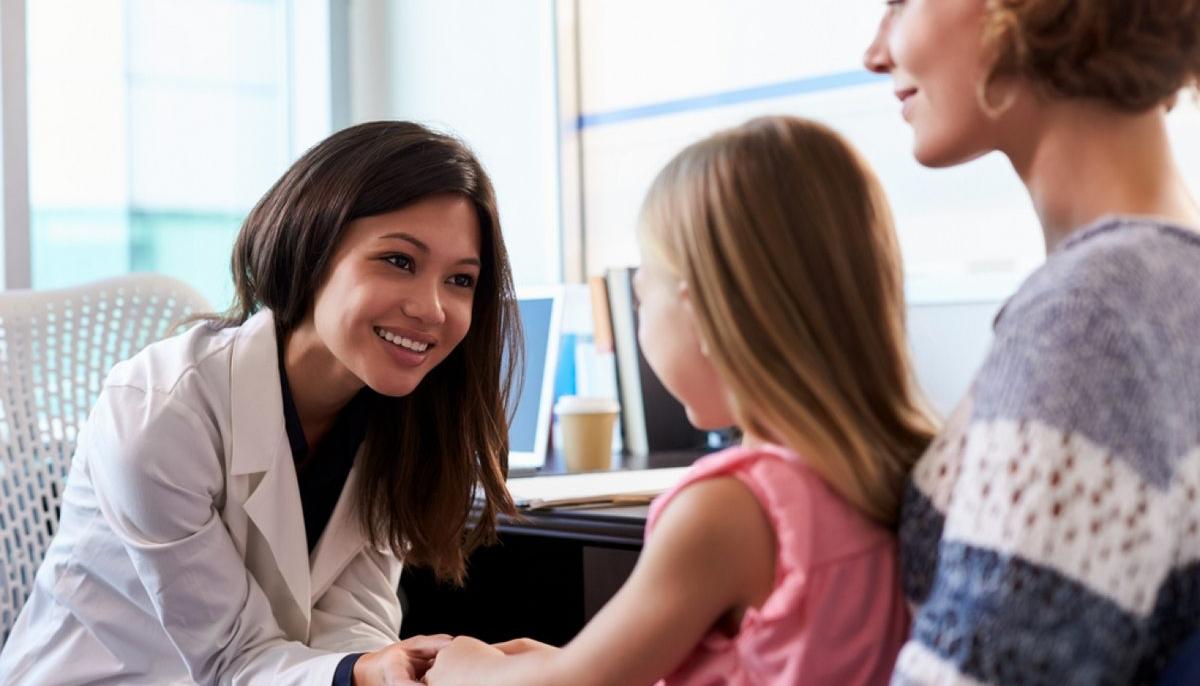Fear or anxiety are emotional manifestations encountered physiologically during childhood throughout the different stages of the child's development, but there are also situations in which these manifestations become extreme and prevent good growth and development in this age category.
The most frequently encountered anxiety disorders in children are represented by separation anxiety, generalized anxiety, social phobia and selective mutism.
Is the child shy or anxious?
Shyness represents a behavioral inhibition and is determined by the temperament of each individual child. In situations where the child meets new people or is exposed to unfamiliar circumstances, he may become shy, restless or reluctant for a short period of time necessary to adapt to the change.
Social anxiety or social phobia, on the other hand, represents an anxious disorder that is disabling for the child through its ability to affect his social life. A child with social anxiety will have difficulty tolerating situations in which he anticipates that he will be evaluated by strangers and, consequently, will avoid situations that require involvement in various social/school activities.
Shyness in young children
Children under the age of 3 are generally more shy than the rest of the pediatric population because they are still in the stage of mental and emotional development specific to this period of life . The shyness of small children is a characteristic strongly influenced by previous personal experiences, the living environment and the parents' involvement in its upbringing.
It is important that during this period of development, parents and caregivers are sensitive to this character trait of the child and offer him the necessary support and encouragement to overcome these moments of shyness. In these situations, it is recommended to avoid forcing the child's interactions with strangers, especially adults, and the gradual introduction of the little one into groups of children at the playground or kindergarten.
How does the anxious child manifest?
The anxious toddler cannot verbalize their fears as well as an older child or teenager, but they display some behavioral changes that can be easily noticed by parents and caregivers:
- State of irritability, emotional dependence and emotional lability
- Sleep disorders
- Frequent awakenings during the night
- Involuntary loss of urine during the night
- The child's description of bad dreams.
Anxiety in the case of the older child can be recognized by the presence of certain changes in behavior represented by:
- Lack of confidence in one's own strength and difficulty in performing simple, usual tasks
- Attention deficit
- Sleep disorders or eating disorders
- State of irritability manifested suddenly
- The presence of negative thoughts or concern about school performance that leads them to expect the destruction of their professional future
- Avoiding daily activities that involve interacting with close friends or people from the school environment - colleagues, teachers.
The child's social phobia is generally manifested through a behavior of avoiding social interactions, the little one becoming more and more withdrawn, for fear of receiving negative criticism or being humiliated. In situations where the child is faced with such situations that involve interaction with teachers or colleagues, he manifests bodily changes manifested by:
- Excessive sweating
- Redness on the face
- umlaut
- Feeling of dizziness
- Epigastric pains
- Heart rhythm disturbances.
When do we request specialized help?
A visit to a psychotherapist or a pediatric psychiatrist is recommended in situations where the child's social anxiety interferes with his daily activities and causes the degradation of his school performance.
What measures can the parent of a child with social anxiety take?
There are several communication strategies with which parents can help their anxious child understand their condition and develop their own coping mechanisms, useful for the long-term management of social anxiety:
- Discussing in a safe and comfortable environment for the child about the reasons that induce the emergence of social anxiety. The parent must be empathetic and validate the child's feelings when he verbally expresses his fears.
- Identifying the particular cause involved in the appearance of the child's anxiety - this reason can be related to a family member, teacher, colleague or friend from the child's entourage or a combination of them.
- Helping the child to recognize the specific manifestations of anxious states.
- Identifying certain activities that can help the child express himself freely without fear of being judged or rejected by the community/family.
- Enrolling the child in meditation or yoga sessions that can help him relax.
- Encouraging the child to give up psychostimulants that can affect his ability to adapt to new situations and circumstances.
- Carrying out relaxing activities with the child - cycling, painting, practicing a sport, singing or simply allocating time for discussions on different topics.
Shyness in older children and adolescents
The shyness of older children and adolescents derives from a lack of confidence in their own strength and the ability to achieve what they set out to do. A shy teenager will face difficulties in communicating with other people, including other children of the same age. The main factors that contribute to the appearance of shyness in older children and adolescents are represented by:
- The extremely protective behavior of the parents who "nudge" him, avoiding exposure to various types of daily challenges.
- Shy parents - the power of example is particularly important during the period of adolescent development, the child adopting the behavior observed in the family.
- The existence of negative experiences regarding communication with other children of the same age - the lack of validation from the entourage or the phenomenon of bullying can favor the appearance of shy behavior.
- The existence of a negative feedback received in a new situation or environment has the effect of discouraging the adolescent in the long term from socializing or participating in new activities.
How does a teenager with social anxiety manifest?
The main manifestations of social anxiety in adolescents are represented by:
- Avoiding social activities that involve interaction with other people, regardless of whether it is recreational activities or tasks and school activities that require working in a team with other children
- Feelings of heightened fear or worry before or during social interactions.
- Physical manifestations such as excessive sweating, tachycardia or stomach pains in situations involving social interaction.
- Avoiding eye contact with other people.
- Difficulty communicating or maintaining a conversation with other people.
- Self-isolation and withdrawal from social life.
- Engaging in harmful behaviors such as drug or alcohol consumption.
Treatment of anxiety in adolescents
Therapeutic counseling and psychotherapy are the main methods of treating social anxiety in children and adolescents, which involve verbalizing the patient's fears about his own thoughts and experiences related to anxiety. The psychotherapist or psychiatrist can apply cognitive behavioral therapy (CBT) to treat the child's social anxiety by teaching the pediatric patient how to identify, understand and change the anxious thoughts and behaviors that interfere with everyday activities and affect their school performance.
In certain situations, behavioral therapy can be supplemented with antidepressant or anxiolytic medication depending on the particularities of each case and the recommendations of the doctor under whose observation the child is.







